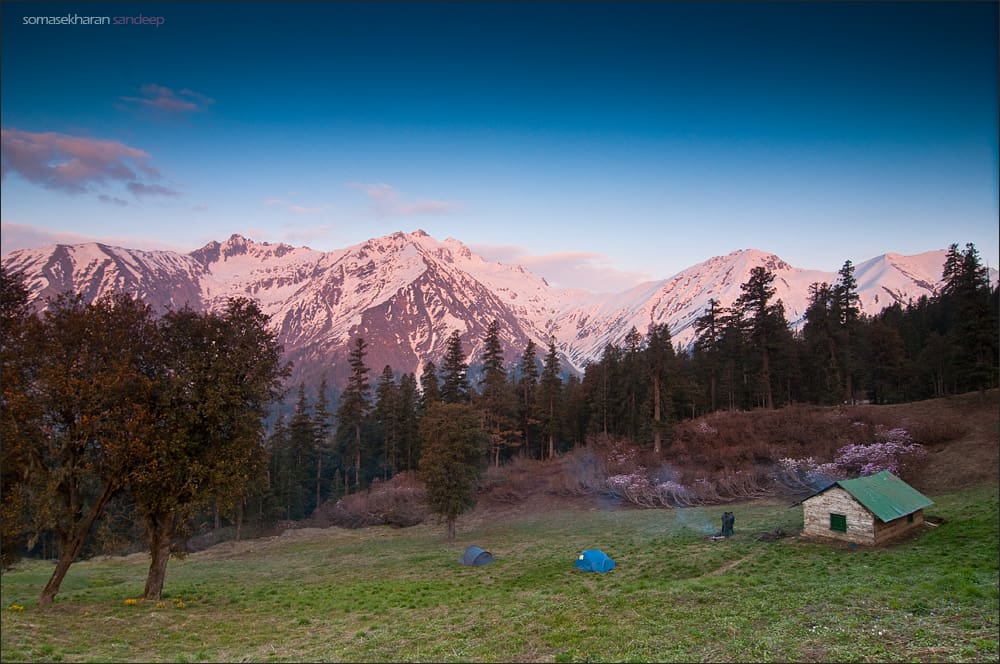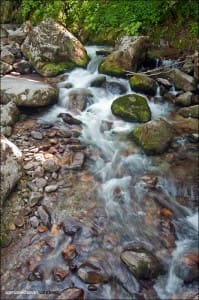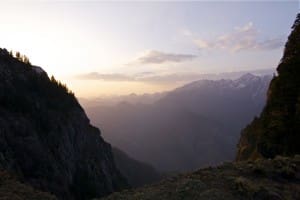One year after a fabled trek to the Himalayas, his very first, Anand Yegnaswami relives the triumph and terror while educating you on choice terms from his personal lexicon
Tumbling out like a potato out of a vegetable truck, racing ahead, I left the others behind as I settled down after a hop, skip and slip. I saw Sandy ahead and the other Ogres behind me. Momentum, I murmured to myself, and picked up the rucksack.
After crossing a serpentine tunnel by bus we had landed at Aut, Himachal Pradesh. The massive face of the Himalaya left me wondering about the forces capable of moving mountains that had created these giants. We were to trek across the Sainj Valley for the next eight days and I got a sense that my training for this gargantuan task could be at best summed up as medi-ogre.
This wasn’t my first time in the Himalayas, technically, for I have vacationed at touristy places in the Shiwaliks. However, for all practical purposes, staying in climate-controlled rooms and pouring hot coffee out of a vending machine and — not to forget — massage showers, cannot be considered a Himalayan experience.

So, here I was at the foot of a colossal hump created out of two landmasses getting cozy with each other, breathing the light mountain air, and gnawing over possible experiences in the next few days.
For a city-dweller from the peninsula, a first-time Himalayan experience can be safely summed up as “uphill”. For a denizen of a concrete jungle this uphill experience is akin to ascending an incline — chasing after carrots of visually extravagant scenery dangling all around.
As we began our trek from Neuli, I remembered Sandy’s words, which loosely conveyed that once I started the trek, I would first question the rationale behind a pursuit so strenuous. However, the stunning panoramas would soon make me forget my physical exhaustion – these words now sounded like prophesy. The snowy peaks, like white drapes pulled over the horizon, offered a sense of tranquility that put my mind to rest. I have a vivid recollection of the first morning we spent at Dhel Thatch just staring at the snow-clad mountains ahead and soaking up the warmth of the morning sun.
It is easy to associate the Himalayas with snow, and one does not have to visit the Himalayas to know that. However, what I did not expect to find in the Himalayas was Pandora. A little after we crossed the second bridge across the Sainj on Day One the vegetation changed. On the northern bank the vegetation was sparser due to the apparent lack of moisture; the southern bank was well wetted as I could see from the abundance of moisture, ferns and broad-leaved bushes and tall trees. It was a sight out of the movie Avatar, the surreal effect provided by a bizarre potpourri of unfamiliar vegetation with towering canopies eclipsing the sun.
But the fun of walking in the Himalayas persists only as long as the sun shines. Once it sinks, the awe turns to ouch. Yes, the dangling carrots start to sublimate at sunset and nothing transcends in feasting the eyes on ether. Muscle, tendon and bone instigated by the labor unions raise a hue though well out of the audible range of the eardrums – for despite the protests of the joints that have labored through the day one can sleep peacefully or, rather, is forced into doing so.
Lucky are those who can feast on such sleep, for often the first day of a Himalayan trek can be an acid test – for me it was more a test of gastric vitriol. Acclimatization. That’s a word every first-timer should know. It’s your ability to adjust to changing environs, and it is akin to taking small doses of poison to build up immunity, for in the mountains if the body senses a sudden change in the environment one could get “yucklimatized” — as I did — and to which many others who did not observe altitude etiquette would relate. One way or another, my stomach was emptied and I went to sleep less burdened though hounded by the pangs of hunger.
Typically, treks would end here if there was an escape route. Or if you didn’t have friends to egg you on, not considering the fact that you are already an omelet from the exhaustion. But our minds underestimate our bodies or are oblivious to a reserve strength that they can conjure up from a few words of encouragement from a mate, bolstered by the knowledge that it will take a million years (thankfully) for a rescue chopper to arrive here in the middle of nowhere.
But while I took it in the guts — literally — the previous night, I can never forget the climb through the forest of Humkani. The light mountain air mixed with herbal aroma put me on the road to recovery. I remembered a little affront I heaped at the mighty mountains when I landed at Aut. Taking a reel out of Apollo 13, I mimicked the scene where Jim Lowell covers the moon with his thumb and looked at a peak far away, murmuring, “As tall as my thumb.”
The Himalayas had made the novice in me capitulate and submit to their dominance. At the same time, they had instilled in me a newfound confidence and a respect for a minimalistic lifestyle. The mineral-rich water from Himalayan streams that sustained us through the course of the trek, the deadwood that burnt to cinders, the warmth of a glowing sun – all reassured me that once I embark on any journey into the Himalayas, the mighty mountains would host me in their folds with all the grace of an Indian host. Athithi devo bhavah.
My first brush with the Himalayas was more of a bump. It left pieces of mountain in me, a sort of homing device that will beckon me no matter where I go.
- Kutch Diaries – Spying on the elusive Desert Cat - June 10, 2020
- Kutch Diaries: Up close with the raptors of Banni - May 24, 2020
- Kutch Diaries – Going Waku Waku with Sandgrouse in Banni - April 29, 2020



